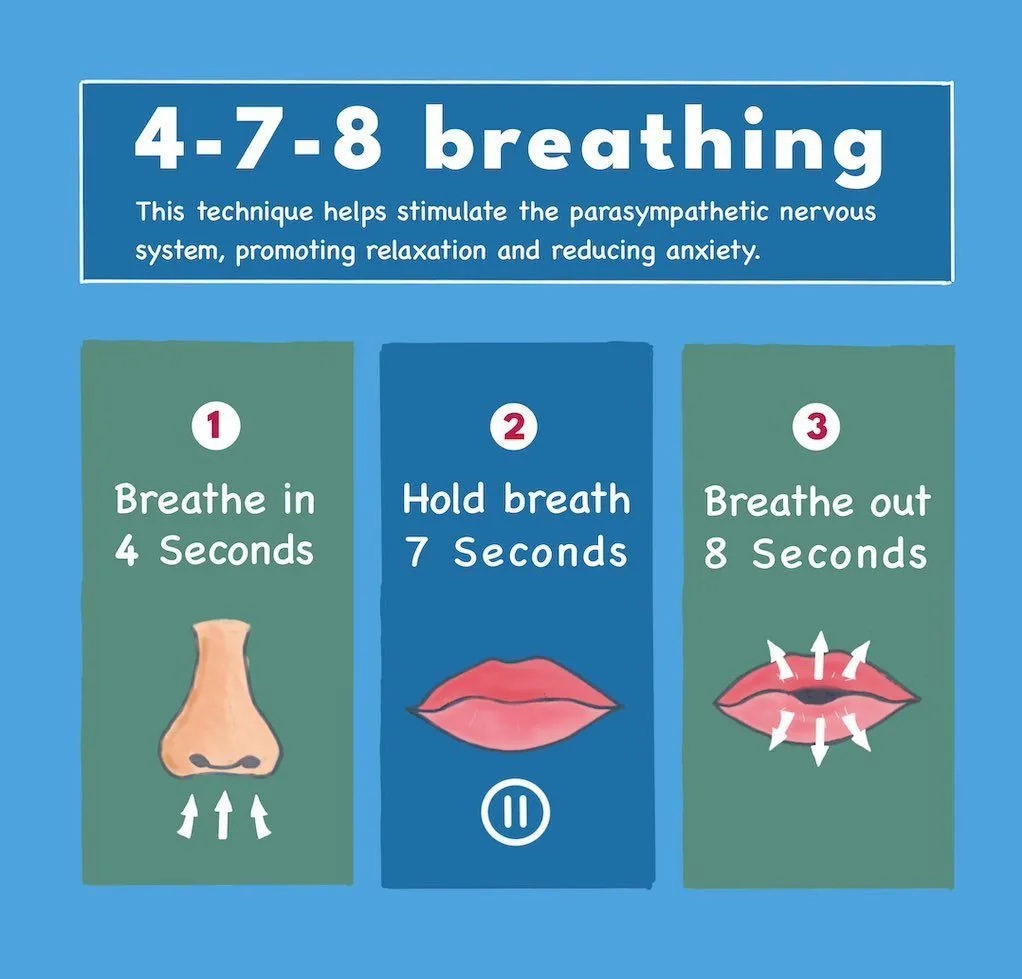4-7-8 Breathing for promoting relaxation and reducing anxiety

"Breathing in, I calm body and mind. Breathing out, I smile. Dwelling in the present moment, I know this is the only moment"
- Thich Nhat Hanh
Introduction
The 4-7-8 breathing is easy to do and quick to learn. It can be highly effective in stressful situations and helps calm your nerves. Some people find it helpful to do it before bedtime to help them sleep.
The 4-7-8 breathing technique is a style of intentional breathwork that can calm your mind and body. It was popularised in 2015 by integrative medicine specialist Andrew Weil, MD, and has ancient roots in the yogic practice of pranayama, or focusing on the breath.
4-7-8 breathing involves three basic steps :
- Breathing in
- Holding the breath
- Breathing out

How to 4-7-8 Breathing
Before starting, adopt a comfortable seated position or lie down - ideally with knees bent and feet flat on the floor or bed if lying.
The 4-7-8 breathing technique can make some people feel light-headed, especially at first, so be sure to be in a space without distractions when you try it. Do not try the technique if you are operating machinery or driving.
For maximum benefit, you want to breathe deep into your belly. To encourage a deep diaphragmatic breath, place both hands on your tummy. When breathing in, focus on feeling an expansion in the stomach but without forcing the muscles to push out. Be careful not to strain during any phase of the practice.
Throughout this breathing technique, your tongue should stay toward the roof of the mouth, with the tip of your tongue touching the back of your two front teeth. Also, before you start, completely exhale through your mouth, making a whoosh sound.
Step 1. Breathe in through your nose while counting to four slowly, feeling the air enter your lungs. If it helps, you can close your eyes while you do this.
Step 2. Hold your breath while counting slowly to seven, trying not to clamp your mouth or nose shut.
Step 3. Slowly Breath out through pursed lips as if blowing through a straw for 8 seconds
Repeat the steps 1 to 3 for five minutes or so.
If you find the technique challenging or feel light-headed or out of breath, make the time for the three phases shorter = 3-5-6. The total number of seconds that the pattern lasts is less important than keeping the ratio.
Try to keep the ratio like the 4-7-8 sequence; for example, your inhale should always be half the length of the exhale - if inhaling for 3 = exhale for 6.
Regular practice of the 4-7-8 breathing technique can significantly enhance your well-being and better manage stress. The more you practice, the more you'll experience these benefits.